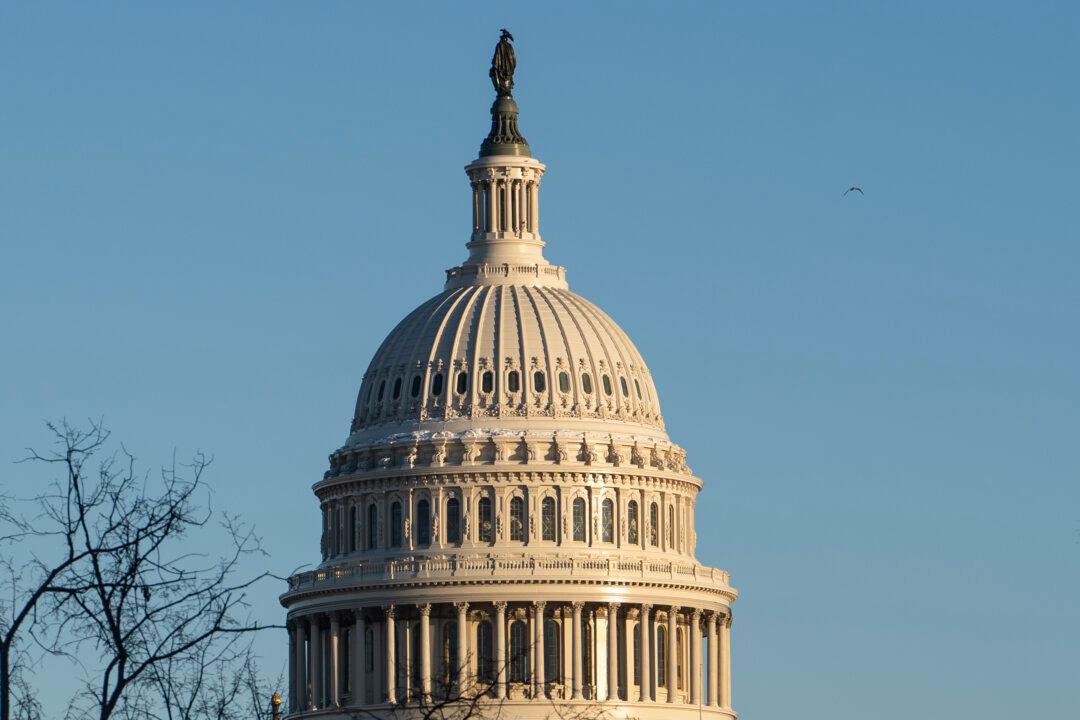Multiple American states, and the nation’s capital, have issued alerts due to poor air quality as a consequence of Canada’s raging wildfires—with some states warning “sensitive populations” to avoid outdoor activity.
On June 28, the Iowa Department of Natural Resources issued an air quality advisory for all counties in the eastern half of the state through Friday, warning that “elevated levels of fine particulates may be a concern over the next several days.” In New York, air quality advisories are in effect on Friday for multiple regions, with the air quality deemed to be “unhealthy for sensitive groups” in some places while other areas are classified as “unhealthy.”
The Pennsylvania Department of Environment Protection has issued a “Code Orange Air Quality Action Day” for June 30 due to “particulate matter from the smoke from Canadian wildfires.”
According to the department, “On a Code Orange Air Quality Action Day, children, sensitive populations such as older people, those who exercise or work outdoors, and those with lung or respiratory conditions such as asthma, emphysema, or bronchitis should reduce or eliminate their outdoor activities.” Washington has also issued a Code Orange air quality alert for Friday.
Wildfires raging across Canada have negatively affected the air quality situation of the continental United States for the past month. Hundreds of out-of-control wildfires have burned through millions of acres of land and forced mass evacuations in Canada, with smoke from these fires moving into America.
Canada’s Wildfires
According to data from the Canadian Interagency Forest Fire Center (CIFFC), there were 499 active fires as of June 30, with 230 of them being “out of control,” 94 “being held,” and 175 “under control.”Most of the fires are in Alberta, British Columbia, Quebec, Ontario, and Manitoba. So far this year, Canada has seen 3,055 fires, with 8.1 million acres being burned through.
Canada is on track to have the most destructive wildfire season in the country’s history. The nation’s wildfire season usually runs from May through October.
A combination of warm and dry conditions is believed to have triggered the wildfires this season. Typically, over half of Canada’s wildfires are caused by lightning, with these fires accounting for more than 85 percent of destruction caused by wildfire. The remaining half of the fires are caused by human activity.
In the Quebec region, lightning has been blamed for the wildfires. In other places, sparks from passing trains and discarded cigarette butts are being blamed.
The country has been put under the Level 5 National Preparedness. National resources are being fully committed to fighting the wildfires.
However, the “national availability of resources is limited,” and “international resources are being mobilized,” according to a June 30 CIFFC update. “Potential for emerging significant wildland fires is high to extreme and expected to remain so.”
Earlier in June, the United States deployed over 600 firefighters, support personnel, and sent equipment to help Canada respond to the wildfires.
“During July, wildfire potential is expected to expand into Yukon, although the eastern edge will recede from western Quebec into central Ontario.





